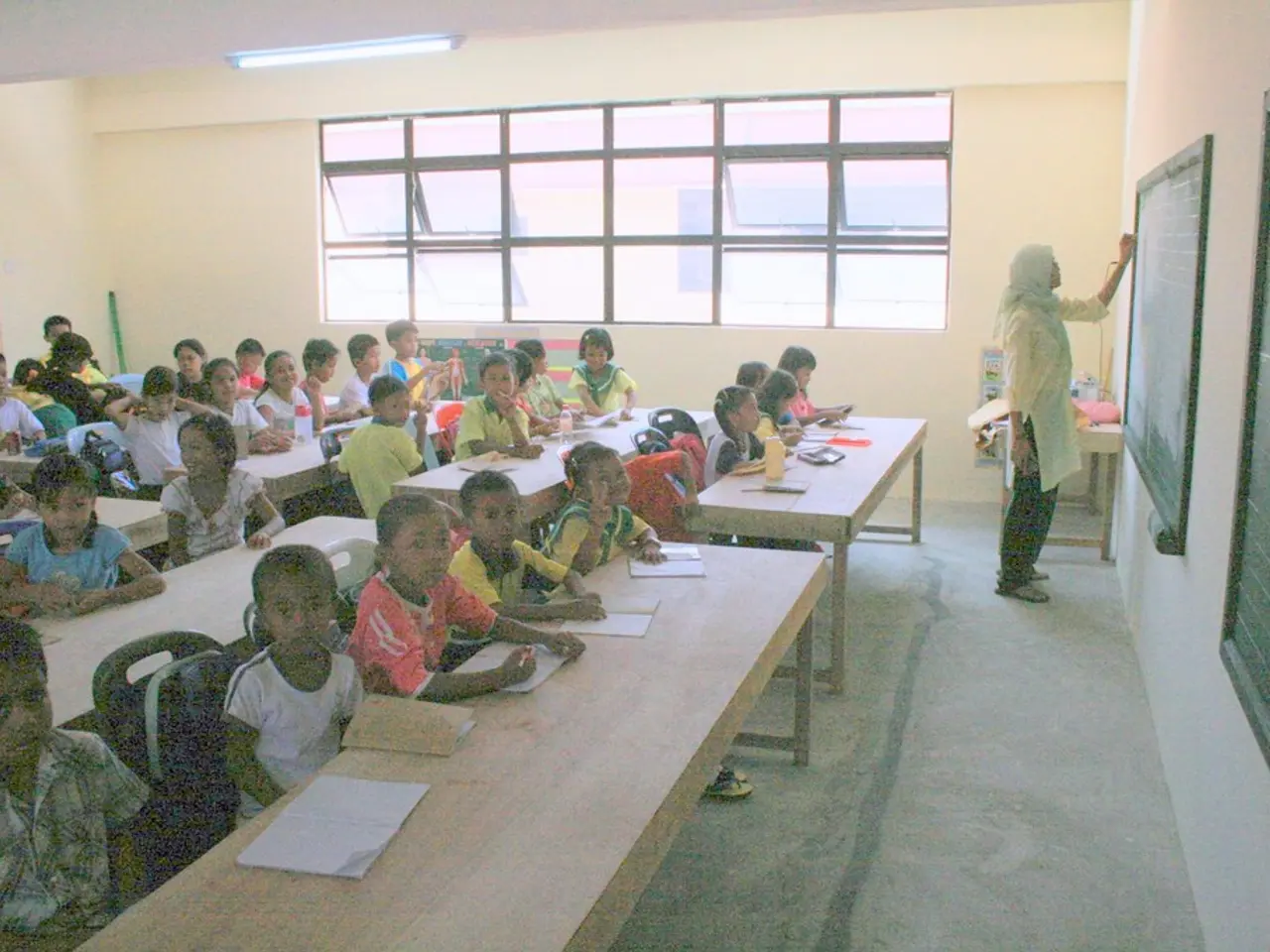The Unseen Price Tag of Solar Chargers: Mining, Production, and Additional Expenses Unveiled
In the pursuit of a greener future, solar energy has emerged as a prominent solution to combat climate change. However, the manufacturing process of solar panels, while delivering drastically lower emissions compared to fossil fuels over their lifecycle, comes with its own set of environmental and social challenges.
Land degradation and habitat destruction are among the primary concerns. Mining activities for key materials like silicon, copper, and rare earth elements often disrupt vast areas of land, causing habitat loss and soil erosion. For instance, mining quartzite for silicon extraction can lead to significant ecosystem and landscape disruption [1][2].
Moreover, the energy-intensive processes involved in producing high-purity silicon and refining metals like silver, aluminum, copper, and rare earth elements consume substantial energy, contributing to solar panels' lifecycle emissions [1][5]. This energy consumption results in considerable greenhouse gas emissions.
Water pollution and usage are another significant issue. Mining operations frequently lead to water contamination through runoff containing toxic substances, and they require significant water quantities, impacting local water availability and aquatic ecosystems [1].
The production and transport of solar panels generate pollution that adds to the overall carbon footprint, although still much lower than fossil fuel alternatives [3][5]. Additionally, large-scale solar farms may increase local temperatures, known as the heat island effect, which can alter microclimates and affect nearby ecosystems [3].
Social impacts are equally concerning. Mining activities expose local populations to health risks through pollution, dust, and toxic substances, impacting respiratory and other health outcomes [1][4]. Resource extraction can also lead to displacement of communities and conflicts over land rights, water access, and environmental degradation [4].
These environmental and social impacts contrast with the green image of solar technology. While solar energy delivers significantly lower emissions than fossil fuels, the hidden environmental and social costs of raw material mining pose challenges that must be acknowledged. These challenges include resource-intensive production that can undermine sustainability goals, toxic waste and pollution risks that complicate end-of-life disposal and recycling, and ecological and social damage at mining sites [1][3].
Efforts to address these issues focus on recycling and closed-loop production to reduce primary material demand, sustainable mining practices to minimize environmental harm, and research to increase panel lifespan and reduce toxic components [1][3]. However, these challenges remain significant and must be addressed to present a balanced view of solar energy's environmental footprint.
References: [1] U.S. Department of Energy, Energy Efficiency and Renewable Energy, Office of Energy Efficiency and Renewable Energy (2020). Materials for Solar Energy Technologies. Retrieved from https://www.energy.gov/eere/sunshot/materials-solar-energy-technologies [2] International Energy Agency (2019). Energy Technology Perspectives 2019. Retrieved from https://www.iea.org/reports/energy-technology-perspectives-2019 [3] Union of Concerned Scientists (2018). Solar Energy's Environmental Footprint. Retrieved from https://www.ucsusa.org/resources/solar-energys-environmental-footprint [4] Amnesty International (2016). Toxic Legacy: The Human Impact of Mining in the Democratic Republic of Congo. Retrieved from https://www.amnesty.org/en/documents/afr60/3599/2016/en/ [5] National Renewable Energy Laboratory (2017). Life-Cycle Greenhouse Gas Emissions of Solar Photovoltaics. Retrieved from https://www.nrel.gov/docs/fy17osti/67825.pdf
- The tech industry is paying attention to the concerns associated with gadgets made from minerals used in solar panels, considering that these materials are often sourced through energy-intensive processes and mining activities that can lead to land degradation, habitat destruction, water pollution, and significant greenhouse gas emissions.
- Solar panels' manufacturing process involves the extraction of key materials such as silicon, copper, and rare earth elements, which contribute to environmental and social challenges in the environmental-science field, including impacting local water availability, aquatic ecosystems, and health outcomes.
- Careers in finance and business must account for the lifecycle emissions of solar panels and the negative environmental and social impacts caused by their production, as corporations evaluate the true costs of investing in data-and-cloud-computing technologies and green energy solutions.
- A greener future lies not only in shifting to renewable sources of energy such as solar power but also in addressing the broader issues within the technology and industry sectors, especially focusing on the efficient use of resources and the mitigation of environmental and social consequences during the manufacturing process.
- In the realm of education-and-self-development, it's essential for individuals to be aware of the complex realities surrounding climate-change solutions and solar energy, recognizing both the benefits and challenges that come with the production and application of these technologies.
- As the solar energy industry continues to grow, career development opportunities in the realm of technology and sustainability are expanding, encompassing efforts to optimize production as well as to find innovative solutions to the environmental and social challenges presented by the materials used in solar panels, ensuring a greener and more equitable future for all.




